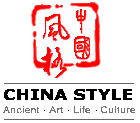Tibetan Art: Folk Carving
Large in number, exquisite in materials and elegant tastes, Tibetan folk carving has been well known for centuries. The dozens of primordial rock painting s found in scarcely populated valleys are the works of Tibetan ancestors, also known as the first batch of artworks found on this land.
The art of folk carving in Tibet falls into many categories, including wood carving, stone carving, bone carving, and clay and metal sculptures, etc.
Woodcarving
There are three kinds of woodcarvings: decorative carvings on buildings, scripture-edition carvings and mould carvings. Various exquisite woodcarvings decorate Tibetan beams, pillars and temple niches. Woodcarvings also appear on beams, pillars and windows in many homes. For example, the high and flat cabinets in many homes are decorated with continuous wood-carved designs. On top of the cabinet are lotus flowers and eight-treasure designs, which are painted in various bright colors.
Nowadays, Tibetan woodcarvers also make traditional and ceremonial carved furniture, such as altar s of all sizes, elaborate thrones, folding tables, incense burners, etc. Once completed, the carved pieces are polished in an old-fashioned way or painted in rich colors in accordance with Tibetan tradition. Some are further embellished with gold rims.
Some of the earliest examples of Tibetan woodcarving date back to the seventh century. The existing buildings of Tubo Times provide good insight into the perfect expressive art.
Clay Sculpture
Clay sculptures, also known as "Caca" in Tibetan, are often found in the various statue styles in temples. The larger works can be as tall as five or six meters, while the smallest can fit into a human hand. In addition to various kinds of Buddhist statues, subjects also include well-known historical figures, such as Songtsan Gambo and Princess Wencheng, as well as pavilion s, flowers, insects, fish, birds in flight and animals in motion, wind, clouds, the sun and the moon.
Stone Carving
Among the various kinds of Tibetan folk carvings, the most popular is Mani stone carving due to its vast subject matter and rich contents which have a unique Tibetan hue.
In Tibet, stone carvings are almost entirely related to religion; "Mani Pile," also known as "lection stone" plays an important part in forming this strong religious atmosphere. The "Mani pile" is a ubiquitous sight near villages or on Tibetan roadsides. Tibetan Buddhists place small rocks into piles, where each rock is inscribed with the six-word mystic teaching of truth (Om-ma-ni, pad-me-Hum ) -- literally "Om! The jewel is in the lotus". A Tibetan will pause at a Mani pile to pray by walking around it clockwise. The subjects of Mani stone carvings are usually lections, Buddhas or Bodhisattvas. According to a carver, the lections or Buddhas on the stone are carved at the request of the relatives of the dead people to release souls from purgatory. Usually, the contents are decided by a Shaman.
Mani stone carving differs significantly from place to place in Tibet according to the demand, interest and materials. Mani stone carvings in western Tibet take on an elegant flavor, while those in eastern Tibet have an air of antiquity.


